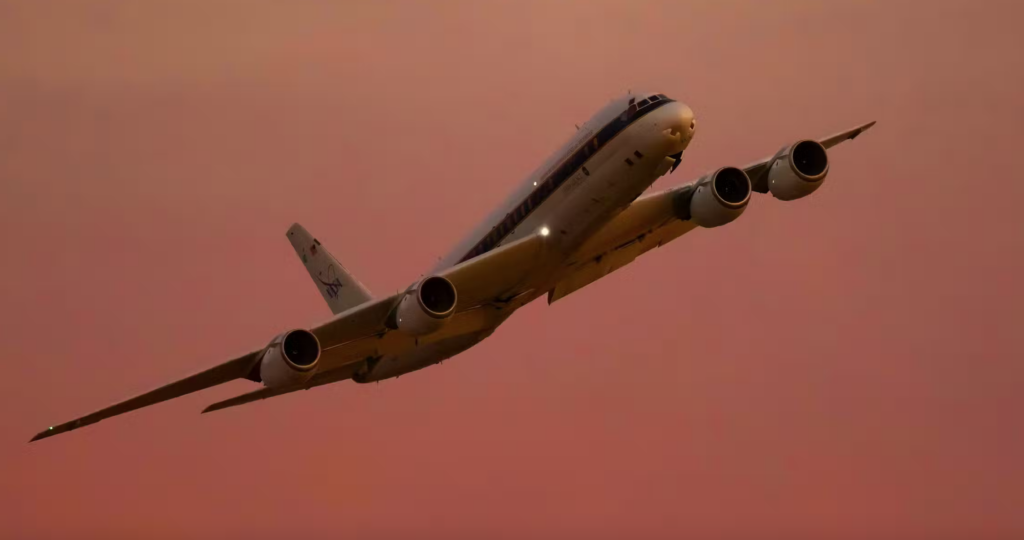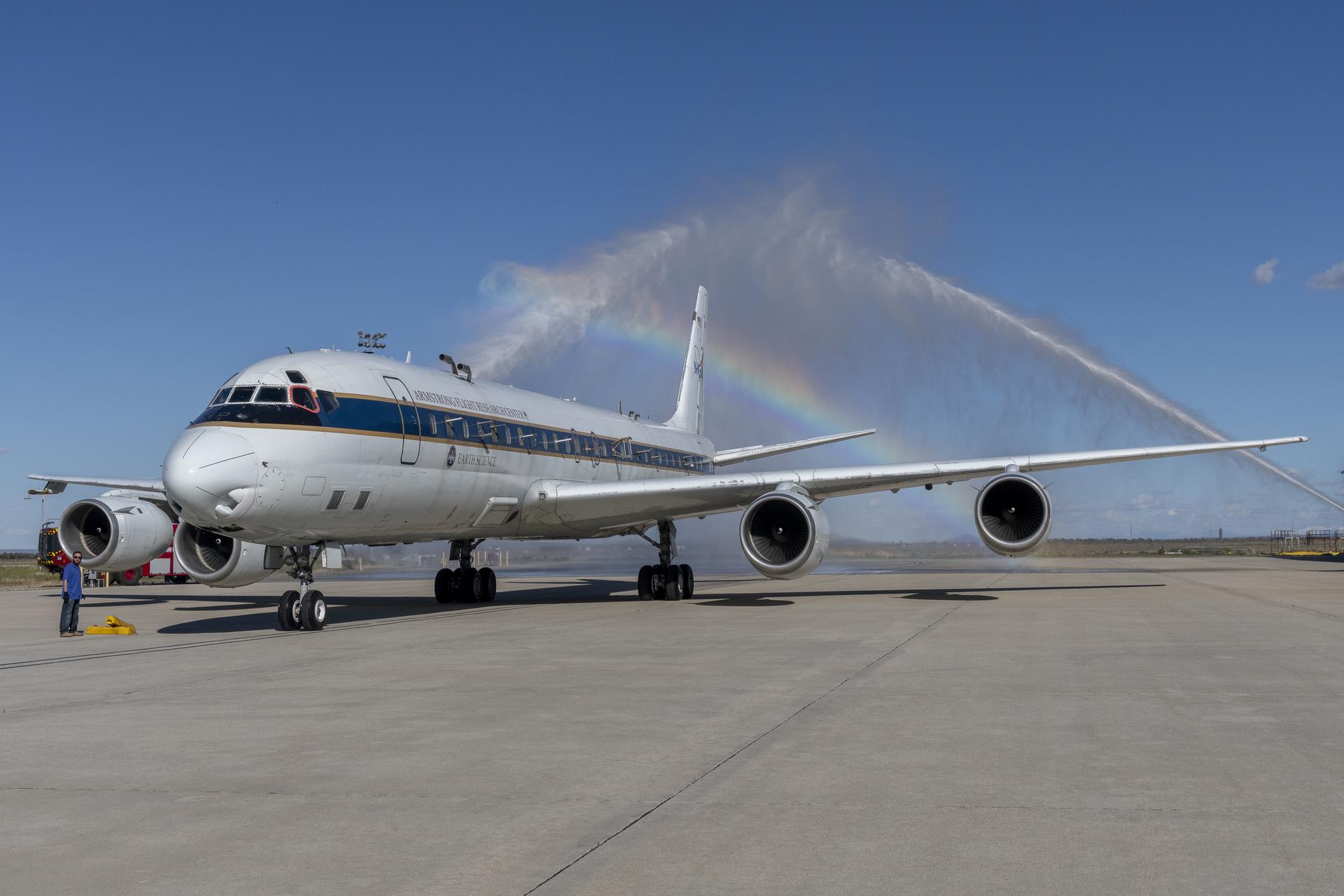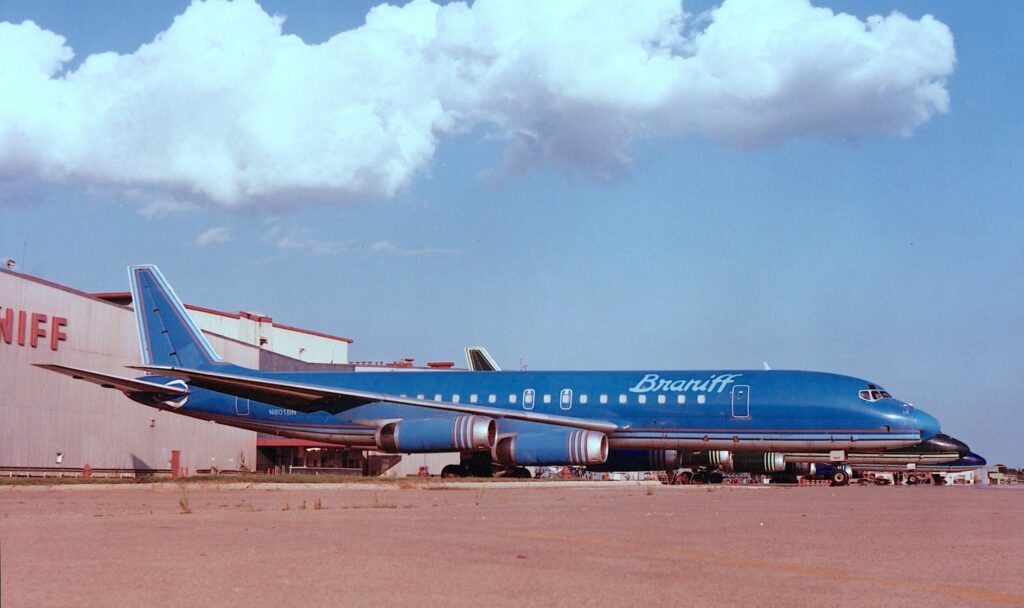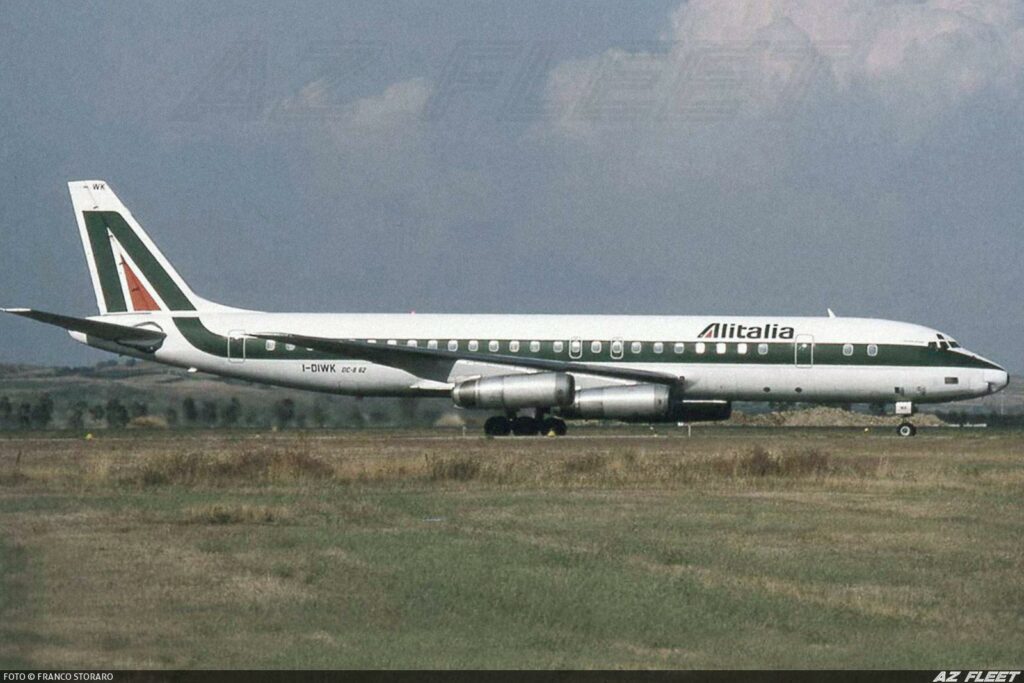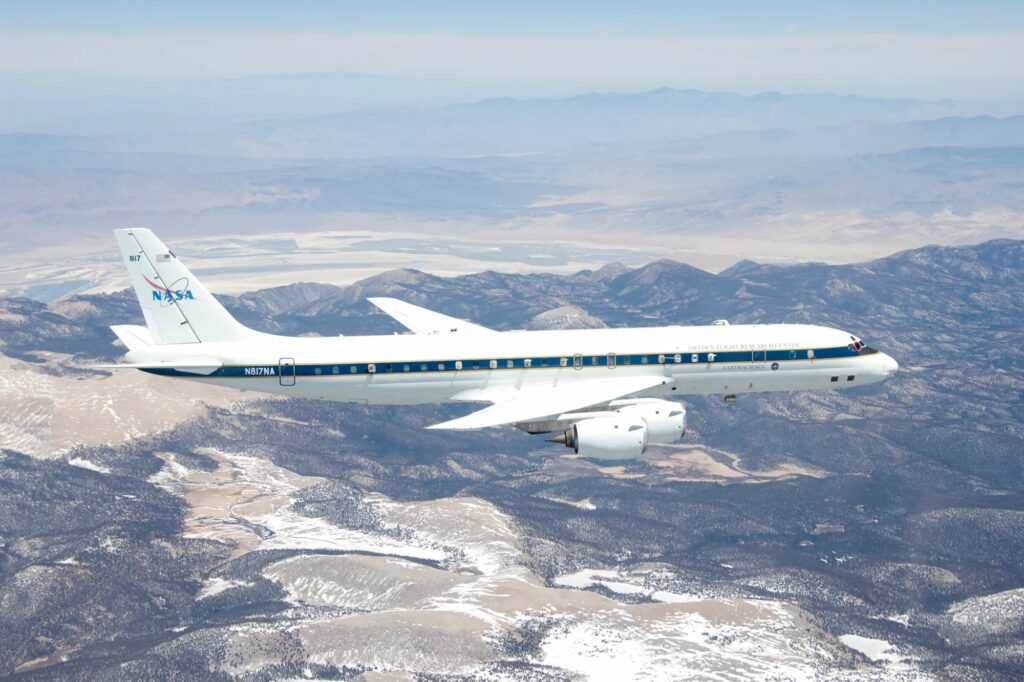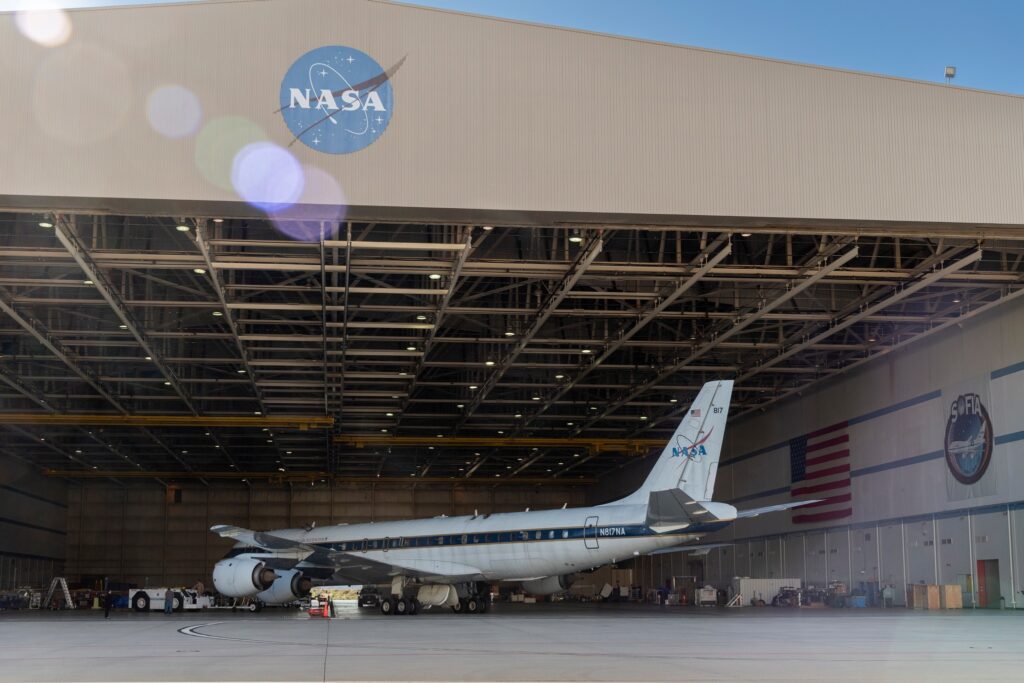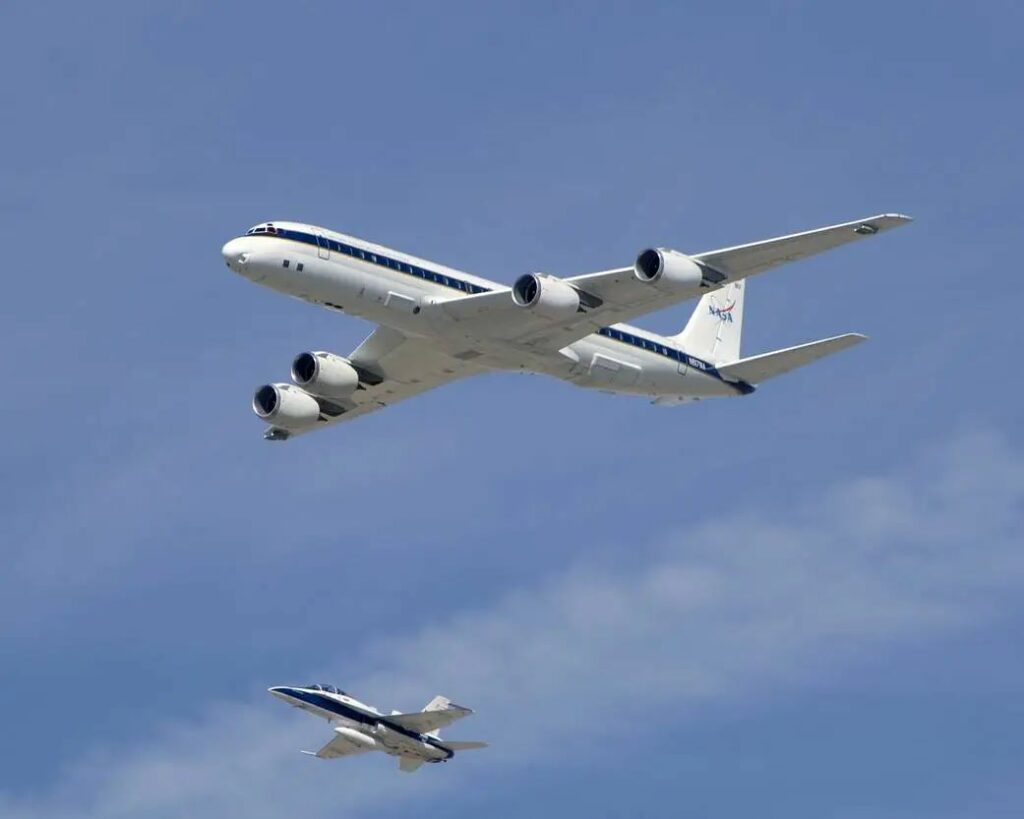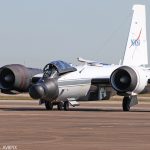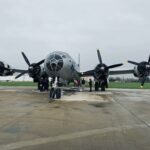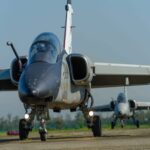By Adam Estes
When the Douglas DC-8 was first flown in 1958, it was just the second American jetliner produced, second only to the Boeing 707, and was among the first narrow-body, four-engine jetliners that opened up travel to the world as no other means of transportation have done before. Today, however, the DC-8 is a relic of a bygone age in commercial aviation, and only a few examples have survived to become museum pieces. One of the last operational DC-8s, N817NA, will soon be retired from service nearly forty years after it was acquired by the National Aeronautics and Space Administration (NASA), and will be replaced by a new generation of commercial aircraft. With the career of NASA817 coming to an end, let’s recall the journey it took to become part of NASA’s illustrious fleet.
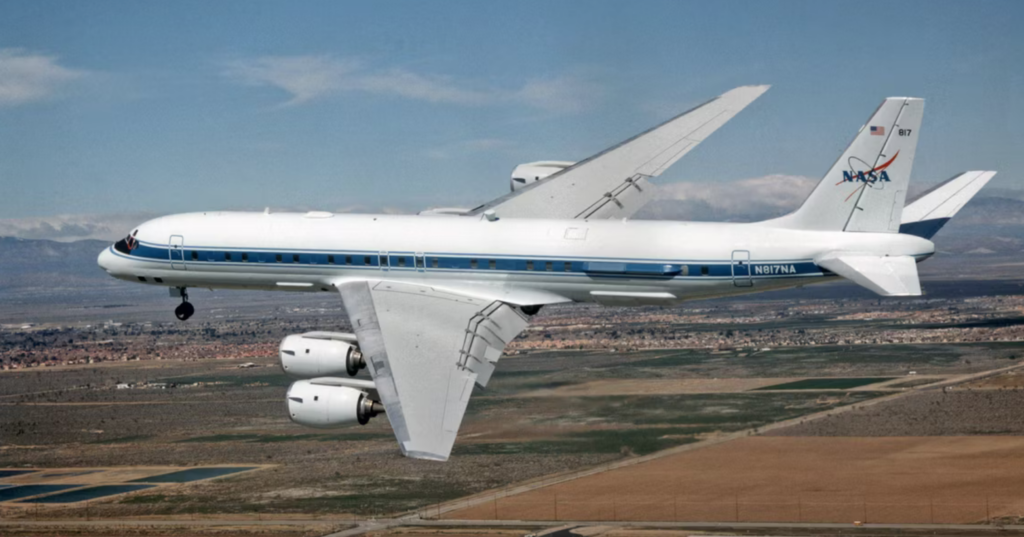
In 1969, the aircraft that would become the NASA DC-8 rolled out of the McDonnell-Douglas plant in Long Beach, California as a DC-8-62 “Super DC-8” with the construction number 46082. It was built on order for the Italian airline Alitalia, where it would be delivered on May 14. It was placed on the Italian registry as I-DIWK, and christened in honor of the opera composer Giacomo Puccini. Over the next ten years, I-DIWK/Giacomo Puccini flew passengers around the world, with most of her routes taking her to and from Italy. As the 1970s drew to a close, Alitalia was beginning to modernize its fleet and I-DIWK was sold to Braniff International Airways as N801BN. Braniff was famous for its brightly color airliners and N801BN received a hue called Corvette Blue, and soon it was placed on routes to and from Latin America. However, on May 12, 1982, Braniff ceased air operations, ending a 54-year line service that stretched all the way back to 1928.
With the company no longer flying passengers or freight, the DC-8s were eventually ferried from Miami International Airport (KMIA) to Dallas Love Field (KDAL), where they would be held in storage at Braniff’s Operations and Maintenance Base. In 1983, N801BN was sold to International Air Leases, a holding company that would soon lease it to Quiet Nacelle Corporation, which upgraded it and several other DC-8s with new nacelles designed by Grumman that were in line with new noise pollution regulations. These new regulations had grounded older jets such as the 707s and stock DC-8s until the original Pratt & Whitney JT3D turbojet engines were replaced in favor of more fuel efficient CFM56 high-bypass turbofans, which allowed numerous DC-8s to fly well into the 21st century.
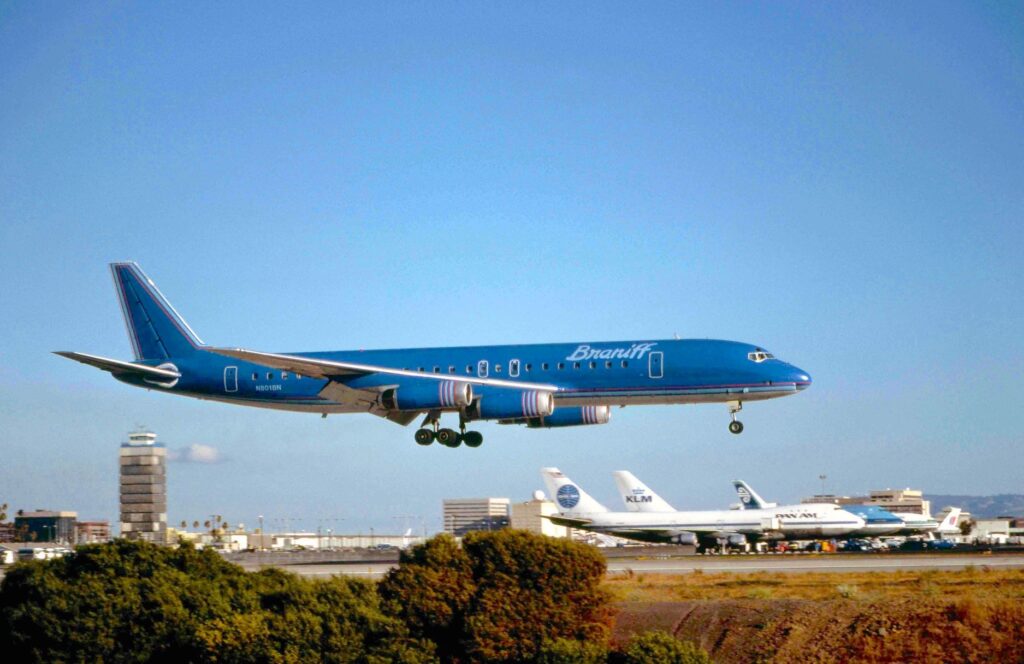
In 1986, N801BN was acquired by NASA and was initially re-registered as N717NA (NASA 717) and was pressed into service the following year. Later, the aircraft also flew with the registrations N817NA, N436NA, and now once again N817NA.
Since its acquisition by NASA, the DC-8 has been used as an aerial laboratory, operating out of Building 703 of NASA’s Armstrong Flight Research Center in Palmdale, California, which also housed the Boeing 747SP used as the aerial platform for the Stratospheric Observatory for Infrared Astronomy (SOFIA), which is now on display at the Pima Air and Space Museum in Tucson, Arizona (See this article for more information: NASA’s SOFIA 747SP Last Flight ). According to NASA, N817NA has been used primarily for sensor development, satellite sensor verification, and space vehicle launch/reentry telemetry and tracking. It has also flown numerous research studies of Earth’s atmosphere and surface, with data collected from the aircraft having “….been used for scientific studies in archeology, ecology, geography, hydrology, meteorology, oceanography, volcanology, atmospheric chemistry, soil science, and biology”.
The aircraft was also flown on missions for universities and academic institutions such as the University of North Dakota from 2005 to 2007 and has flown everywhere from the U.S. Virgin Islands to Antarctica via a base set up in Punta Arenas, Chile as part of Operation Icebridge, NASA’s annual polar ice field campaign. It has also been used to observe and record emission levels in urban areas ranging from Los Angeles to New York City. The most recent assignment that NASA817 returned from in April was the Airborne and Satellite Investigation of Asian Air Quality, or ASIA-AQ mission, in which it was used alongside aircraft from South Korea, Malaysia, the Philippines, Thailand, and Taiwan to gather data for the investigation.
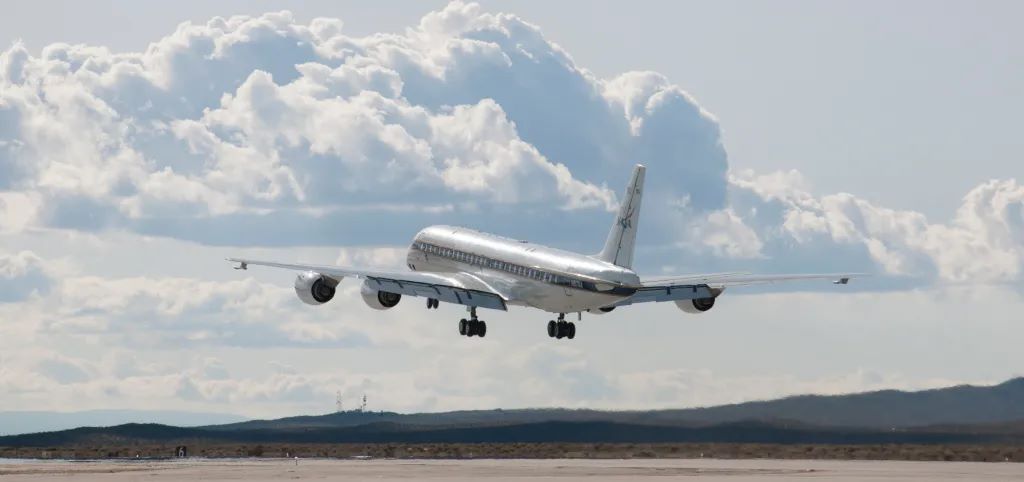
But being the only DC-8 in NASA’s fleet, let alone one of the few remaining airworthy DC-8s, time inevitably catches up with even the most venerable of designs. Anticipating the need for a newer platform for aerial studies, NASA acquired a Boeing 777 (JA704J) from Japan Airlines in 2023. Now known as NASA 577 (N577NA) the Triple 7’s long range and endurance with only two engines as opposed to the DC-8’s four, NASA577 will continue the work that NASA817 has dutifully carried out for the last 37 years, when the latter concludes its operations in May 2024.
[wbn_ads_google_three]Following the official retirement of the DC-8, NASA says that it will be delivered to Idaho State University in Pocatello, where it will be used as an instructional airframe for the school’s Aircraft Maintenance Technology Program, where the former aerial laboratory will provide invaluable hands-on experience for the next generation of aircraft maintainers. Though this DC-8 may no longer soar the skies, its long life of service will continue at a quieter pace in Pocatello, and it will certainly live on in the memories of the pilots and flight engineers who flew it, the maintainers who serviced it, and the scientists whose work would be impossible without it. Few if any of the crews and passengers of Alitalia and Braniff could ever know the value that this DC-8 has had over its 50+ year career, but like many planes around the world, if it could talk, the stories it would tell would certainly be worth listening to.
